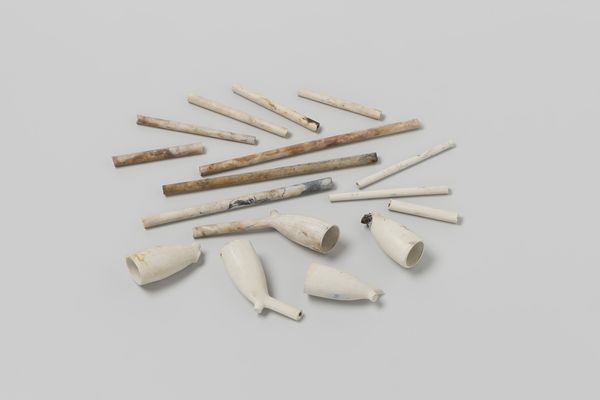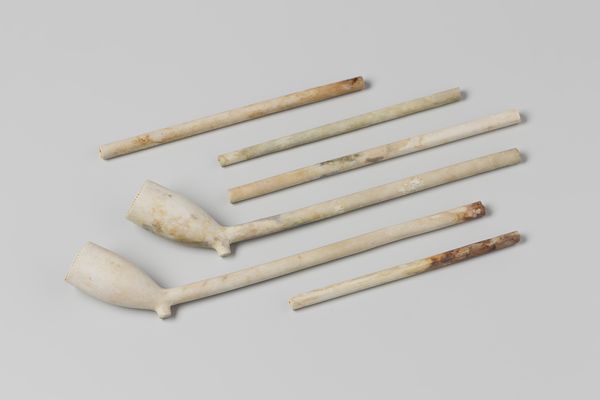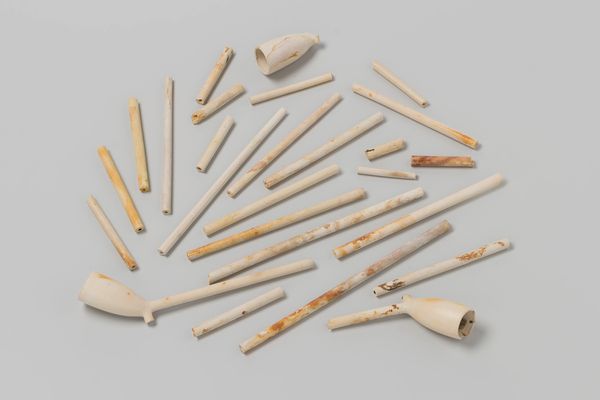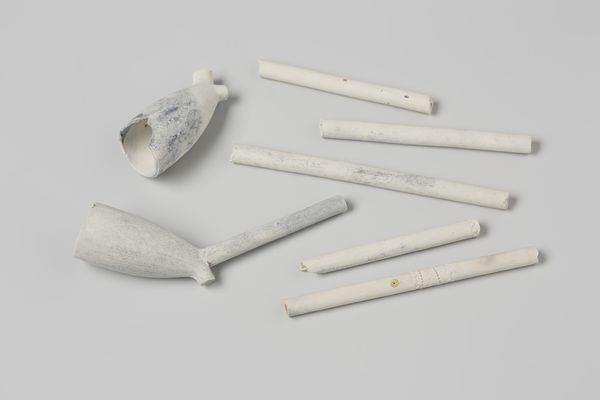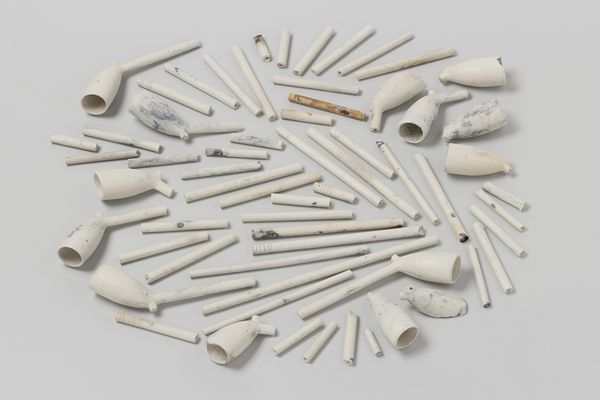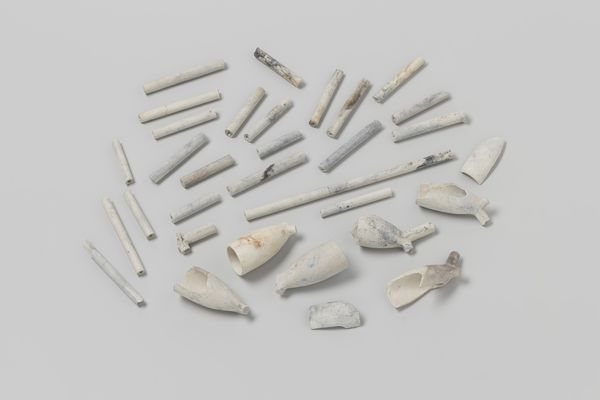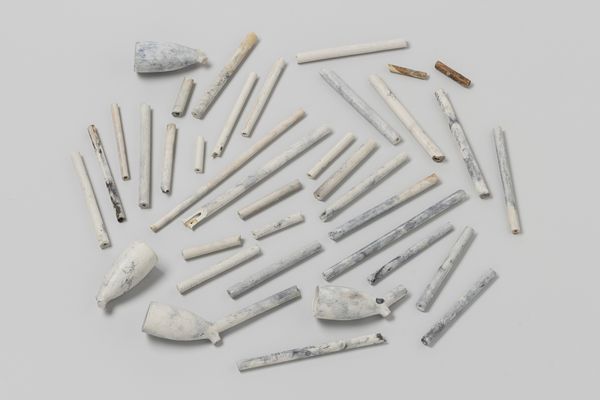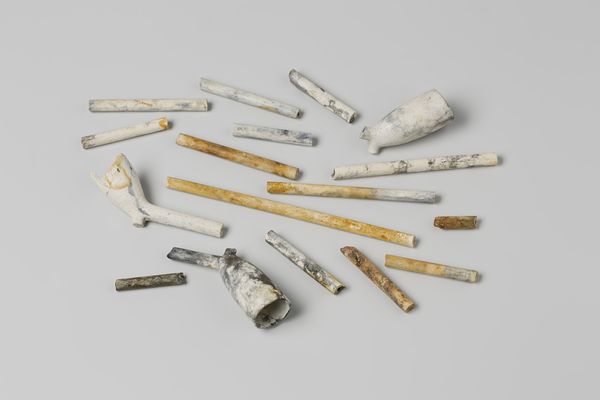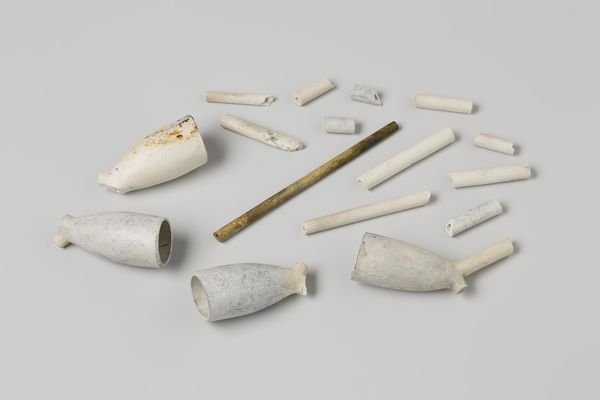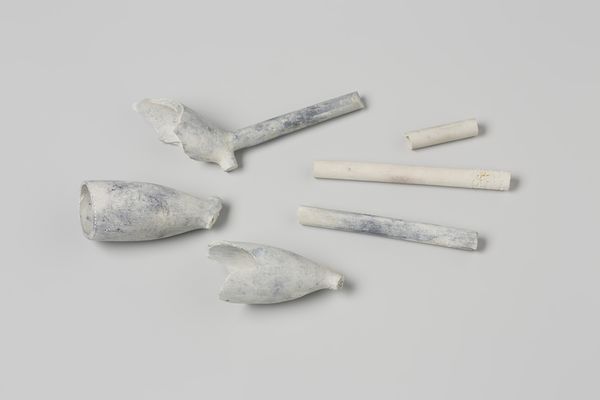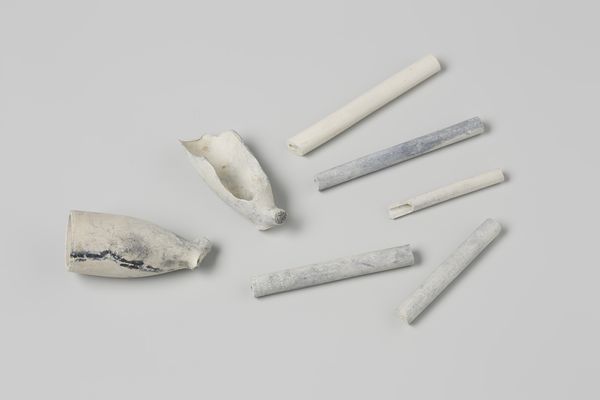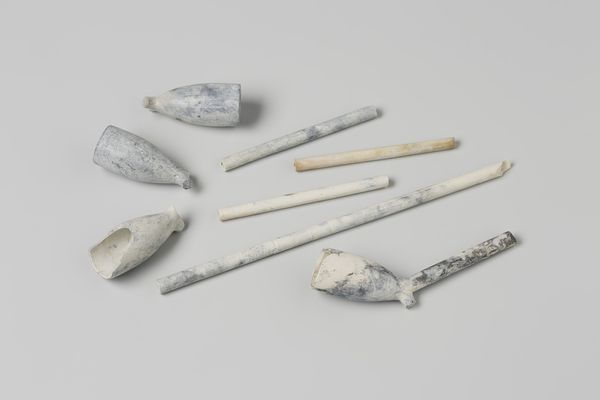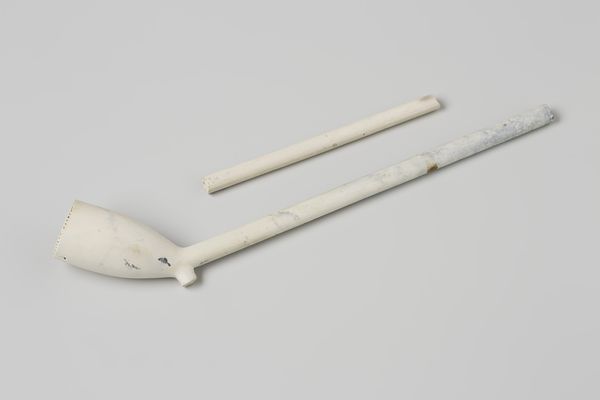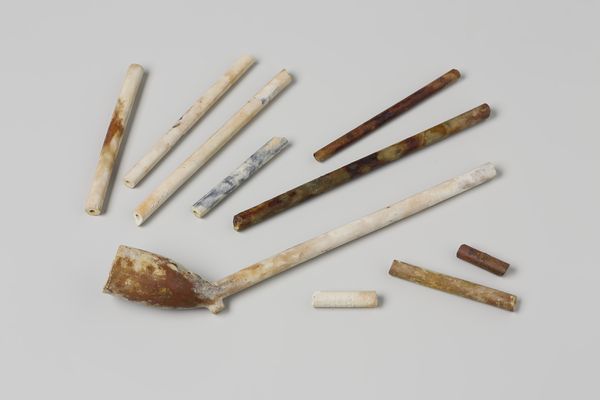
Fragmenten van pijpen en pijpenstelen uit het wrak van de Oost-Indiëvaarder 't Vliegend Hart Possibly 1700 - 1735
0:00
0:00
ceramic, earthenware
#
dutch-golden-age
#
ceramic
#
earthenware
#
stoneware
Dimensions: length 11 cm, width 2.2 cm, depth 3.5 cm, length 1.7 cm, diameter 0.5 cm
Copyright: Rijks Museum: Open Domain
Here lie fragments of pipes and stems recovered from the wreckage of the Dutch East India ship, ‘t Vliegend Hart. In their time, pipes were more than mere objects; they were instruments of social ritual and personal reflection, laden with cultural significance. Consider the iconography of smoke itself. Since ancient times, smoke has been a symbol of transformation, of offerings ascending to the heavens. The act of communal smoking—seen in indigenous ceremonies of the Americas long before European contact—evolved into a shared experience that facilitated dialogue, negotiation, and social bonding. Yet, the pipe is also a poignant emblem of transience. Like the fleeting nature of smoke, our lives, too, are but ephemeral wisps, here one moment and gone the next. The breakage and decay of these pipes from ‘t Vliegend Hart whisper tales of journeys interrupted and lives extinguished, their stories now fragmented and scattered like relics of a bygone era. These unassuming objects engage us on a subconscious level, stirring our collective memory and prompting us to contemplate the intricate, cyclical dance between creation, destruction, and rediscovery.
Comments
No comments
Be the first to comment and join the conversation on the ultimate creative platform.
